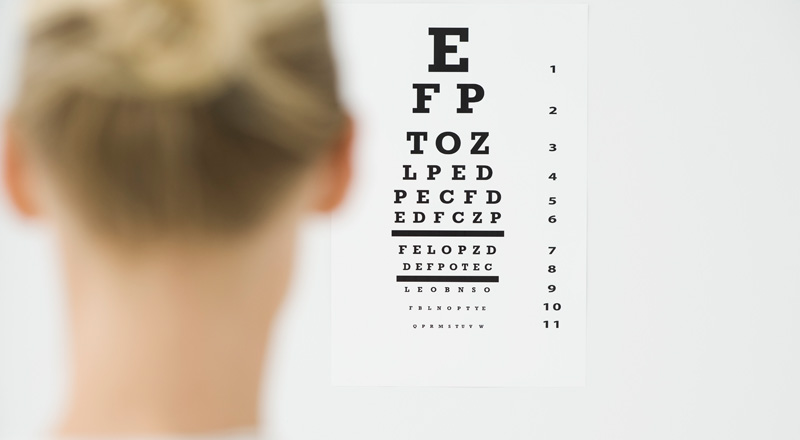At IBVI, we look at every day as a new opportunity to create and grow employment opportunities for people who are blind or visually impaired. However, not everyone understands how an individual is defined with blindness or visual impairment. Sure, we’ve all experienced a visit to the eye doctor, repeating letters we’re squinting to see, but how is it all measured? What does it mean when you’re told you have 20/20 vision?
 That chart we’ve all squinted at? It’s usually a Snellen chart, but the newer LogMAR chart has recently been introduced into practice. Both are eye charts that help doctors estimate visual acuity, but we’ll focus on the Snellen chart which has been in practice since 1862.
That chart we’ve all squinted at? It’s usually a Snellen chart, but the newer LogMAR chart has recently been introduced into practice. Both are eye charts that help doctors estimate visual acuity, but we’ll focus on the Snellen chart which has been in practice since 1862.
Developed by Dutch ophthalmologist Herman Snellen, the chart features eleven lines of letters (which are formally called optotypes); starting with the largest at top and getting smaller with each subsequent row. When you stop by your eye doctor, it’s usually the easiest and quickest way to get a solid read on the status of your vision. To take the test, you’ll stand 20 feet away from the poster, cover one eye, then read aloud each letter starting with the top row. The smallest row you can read accurately? That’s the row that indicates your visual acuity for that eye. Then you’ll do it all again covering the other eye. In situations where a careful, precise examination is needed, specialized equipment will usually be used in addition to a Snellen chart.
Standard vision is defined as 20/20 vision, and it helps to think of this concept of “normal vision” in comparison with another level of acuity. If both your eyes have 20/40 vision, that means you see at 20 feet what a person with 20/20 vision sees at 40 feet. In the other direction, if both your eyes have 20/10 vision, that means you see at 20 feet what a person with 20/20 vision can only see at 10 feet. What does this mean for us at IBVI?
In the United States, legal blindness is defined as 20/200 vision, and an estimated 1.1 million Americans fit this category.1 With 20/200 vision, an individual can still see but with much difficulty. Totally blind is the term for someone whose eyes do not take in any light. Impaired (or low) vision refers to a visual acuity of 20/70 or poorer. As a note, if one can improve their eyesight to 20/20 with visual aids, they are not considered legally blind or impaired.
While many blind and visually impaired people adapt to their conditions and lead fulfilling lives, we do what we do to help make it easier for these individuals to achieve their goals and find success.
1 https://www.webmd.com/eye-health/legally-blind-meaning


